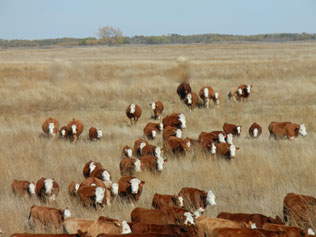By knowing what a healthy dog looks like, it's easier to know when your dog is sick or not. If your dog is healthy, it should breathe about 15-20 times per minute. Your dog should also have clean-smelling ears, bright eyes, and shiny coat of fur that isn't patchy or balding in places.The normal body temperature for dogs is usually between 101 and 102 degrees Farenheit.
Labradors, as with any dog, can cantract some minor issues from time to time. I have found that prevention techniques will stop alot of those minor issues, so you don't have to be running to the Vet and spending alot of extra money. I do a weekly program of, checking and cleaning, ears, eyes, teeth, clipping nails, and ckecking their coats for ticks(very important in the summer), hot spots, and also for any lumps or cuts and scrapes, when you do this on a regular basis, you should be able to spot the start of something and catch it before it becomes an issue. It is always best to consult with your Vet if you notice any changes.It is a good idea to keep a medical first aid kit on hand. Stock it with a rectal thermometer so you can closely monitor the puppy’s temperature. I also have on hand, peptol-bismol, pedialite,canned raw pumpkin,tea tree oil or lotion, polysporin,vetericyn, apple cider vinnergar, syringe, and vet wrap. I also make sure they have their annual shots for parvo/distemper and rabies. Please DO NOT take your puppy anywhere before all his shots are done, that should be at about 16 weeks if you follow the schedule.
Some of the issues they can have are:
- Eye infection
- Ear infection
- Hot spots
- Allergies
- Upset stomach
- Diarrahea
- Dehydration
- Parvo ( you vacinate for that, so that should not be an issue)
Ways to tell if your puppy is sick:
- Look for changes in appearance. When your dog is sick, one of the first things that will change is your dog's appearance. Recognize the physical symptoms of sick dog, such as:
- Red, swollen eyes
Runny, crusty nose
Itchy ears (your dog will scratch at them)
Change in the body weight
Strange smells,
Bald spots, dull and poor hair coat
Bumps, tumors, etc.
- Know the behavioural changes in sick dogs. When your dog is sick, its behaviour is also another thing that will drastically change.
- Look for symptoms such as:
Vomiting, coughing, or sneezing
Heavy panting (without having exercised)
Loss of appetite and/or water intake, lethargic
Biting, clawing, and/or scratching at their own body
Unusual behaviours (falling over, constantly sleeping, shaking, etc.)
- Check the colour of your dog's gums. Healthy gums should be pink. If your dog's gums are yellow, grey, white, or blue, it indicates that your dog is definitely sick and that you need to take it to the vet as soon as possible.
- Know whether your dog is hydrated. To check if your dog is hydrated, gently pull up the skin on the back of its neck and let go. If the skin seems to almost "stick together", your dog is dehydrated.
- Know symptoms of specific illnesses in dogs. Read a bit about some common illnesses in dogs and their symptoms to get a better idea of whether or not your dog is sick. For example,
If your dog has a cold, he will shiver and tremble, have loss of appetite and have loss of activity.
If your dog has a pup fever, he will become weak and have a very dry, warm nose.
If you're not sure whether your dog is sick or not, call your local vet clinic and talk to a vet about it.
Knowing and understanding your puppy’s habits is key to being able to identify a medical problem before it becomes life threatening. Pay attention to your puppy’s signals. Early identification of a health problem can make the difference between life and death
The Internet is also a good source of puppy illness information. There are numerous websites that can help you analyze symptoms. , www.petside.com offers a program that helps you determine just what is wrong with your dog by answering questions based on many facets of your puppy’s symptoms.







